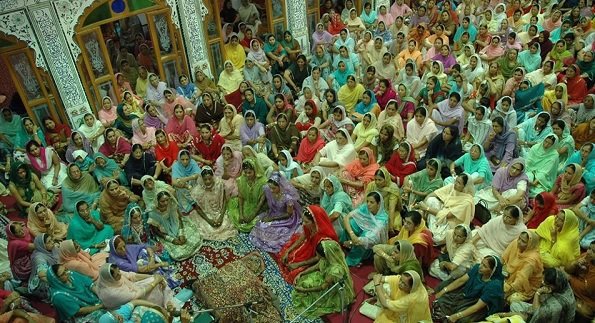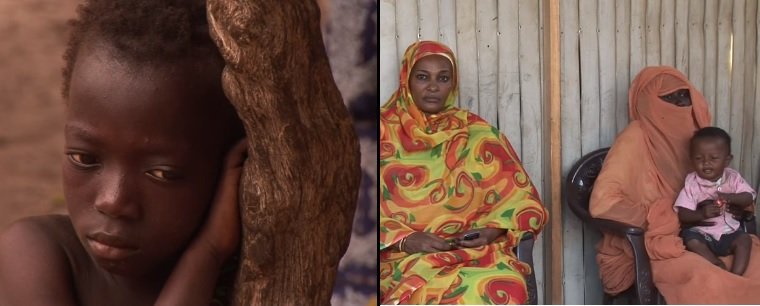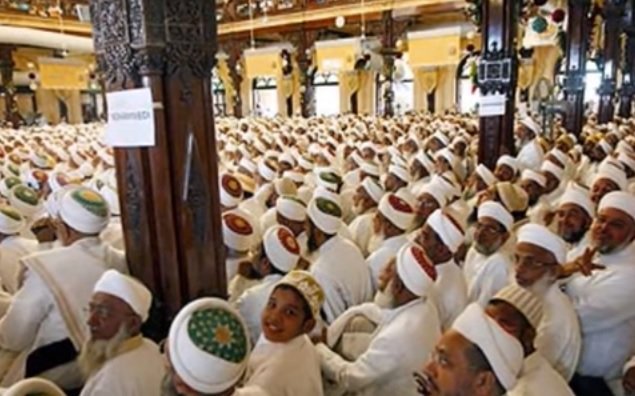On February 6, the world observes United Nations International Day of Zero Tolerance for Female Genital Mutilation (FGM), considered a violation of human rights. But here’s the shocker: It’s very much prevalent in an Indian community that is, sadly, showing no signs of doing away with the barbaric practice any time soon.

What is FGM?
Read this excerpt from a personal account by a Bohri woman – originally published on Sahiyo – that is sure to tear you apart.
“I was five years old when my mother and aunt took my cousin and I on an “excursion”…I was confused; I didn’t know where I was and what I was doing there…I had been greeted by an old lady, whose face I can’t remember…My mother asked me to remove my underwear.
I remember saying no; I didn’t want a strange woman to see me without my underwear on. My mother assured me it would be okay; I trusted her and did as she asked. The old lady told me that she wanted to check something in my private area and asked me to open my legs.
I was so young that I wasn’t scared at that time. I was confused, but not scared. I was innocently oblivious to how invasive and inappropriate this situation was and so I obediently did as I was told. I remember a sharp pain. An agonising pain. A pain that I can still vividly remember today. So intense that I still have a lump in my throat when I recall that moment.
I instantly started sobbing, from pain, shock, confusion and fear. My next memory is that of blood. More blood than I had ever seen, suddenly gushing out from my most intimate area. I still didn’t comprehend what had just happened to me.”
Yes, this happens. ‘Female khatna’ (circumcision) or Female Genital Mutilation (FGM) in India and Pakistan, it is limited to the Dawoodi Bohra community. A Shia Muslim sect largely concentrated in Mumbai, the community is generally perceived as progressive. But yet practice continues and is perceived to be secret.

Not anymore.
In the last four years, at least two online petitions urging the community to stop it have brought the issue out in the open. Despite as many as 50,000 people signing up, the petitions may have fallen on deaf ears, but have definitely sent shock waves across the country and triggered a national debate.
The first petition was in 2011, by one Tasleem, a Mumbai-based woman in her 40s. It was an appeal to the Bohri high priest that the practice is not Islamic, but an African ritual that somehow entered India.
It said:
Imagine you’re a 5-year-old girl. You’re taken by your mother and family members you trust to meet a doctor. They hold your arms and legs so you don’t struggle. Then they take a blade and cut your genitals.
But the petition didn’t move the community heads. This is what Qureshi Raghib, Dawoodi Bohra community spokesperson, told The Quint:
“I have heard about the online campaign but Bohra women should understand that our religion advocates the procedure and they should follow it without any argument.”
The second petition, in December 2015, was by an activist group called Speak Out on FGM comprising 17 women from the Dawoodi Bohra community. The petition took the issue directly to the government. It’s seen over 43,000 signatures already. Of course, no end to the practice though.

But efforts continue:
A year ago, five women – social worker Mariya Taher, researcher Shaheeda Tavawalla-Kirtane, filmmakers Priya Goswami and Insia Dariwala and journalist Aarefa Johari – started the blog Sahiyo, that provides a platform for discussion and dialogue to achieve a collective solution.
Sahiyo is the Bohra Gujarati word for ‘saheliyo’ or friends. The group has conducted the first ever survey in the community on khatna, which is expected to be released soon.
“We surveyed around 400 Bohra women globally, majority of which were from Mumbai, and are analysing the figures. But preliminar data suggests at least 80% women have undergone this.”

Does she rest hope on the petitions?
“We are waiting for more signatures, after which we plan to directly approach concerned ministers and suggest possible action. It’s a very sensitive subject, and things won’t change overnight,” she said.
Is the community supporting these women? Johari said the support is there, but few are willing to come out in the open and say they want an end to it.
“It takes a lot to openly lend support, but things are changing.”
Here’s what else is happening:
- Taking a step forward, the group on Saturday began a “Each One. Reach One” campaign, that urges women to reach out to at least one Bohra man or woman and talk about khatna. The campaign will continue until women’s day on March 8
- Another blog Break the Silence too is up on the web, which sheds light on similar narrations and spread awareness about the issue
- In 2013, a students of National Institute of Design Ahmedabad, Priya Goswami, made a 27-minute documentary on the subject titled A Pinch of Skin. It went on to win the national award
- Speak Out on FGM, which started as a Whatsapp group, now runs a Facebook page that serves as yet another platform for such discussions.
Feature image for representation / Source: Homegrown

















